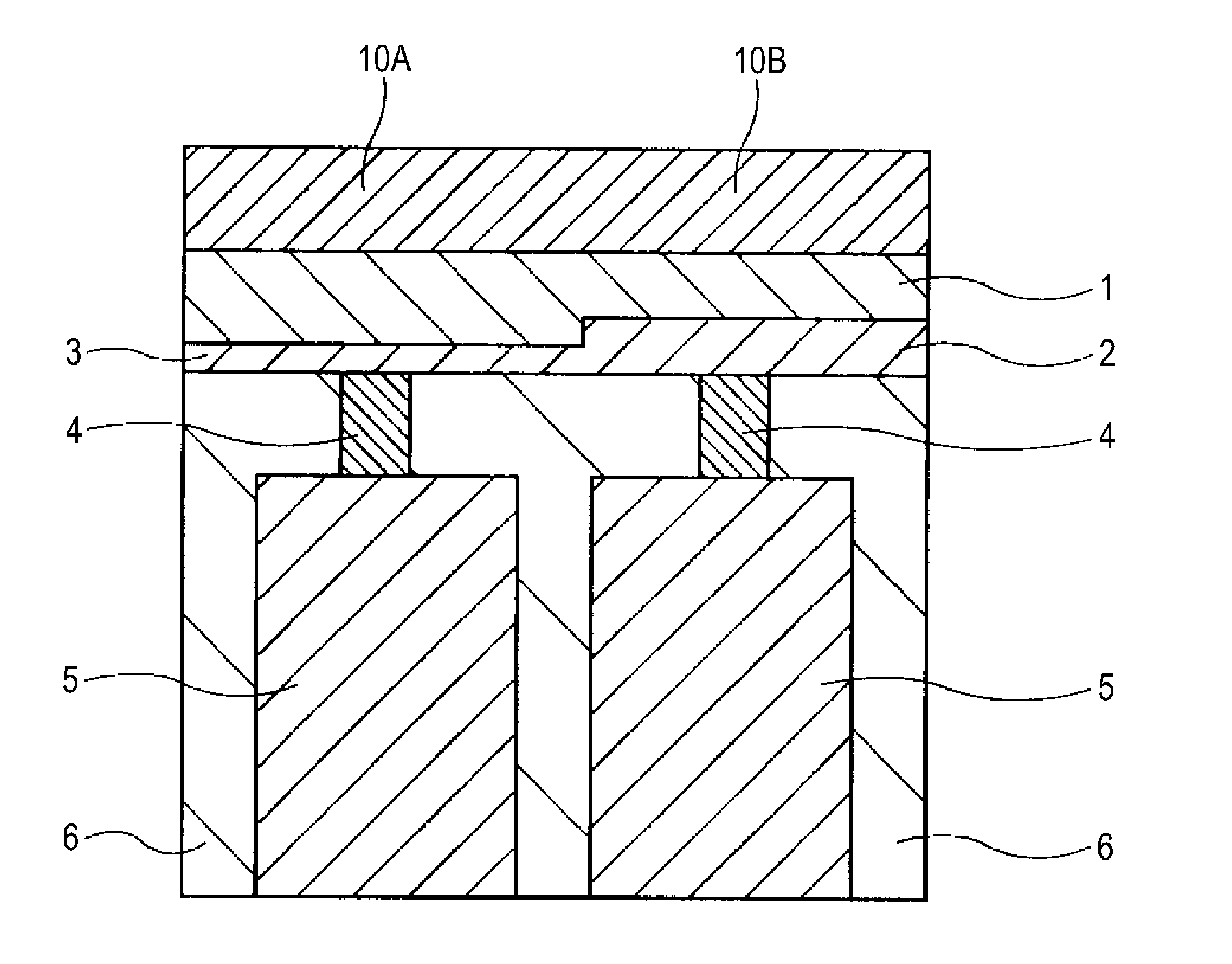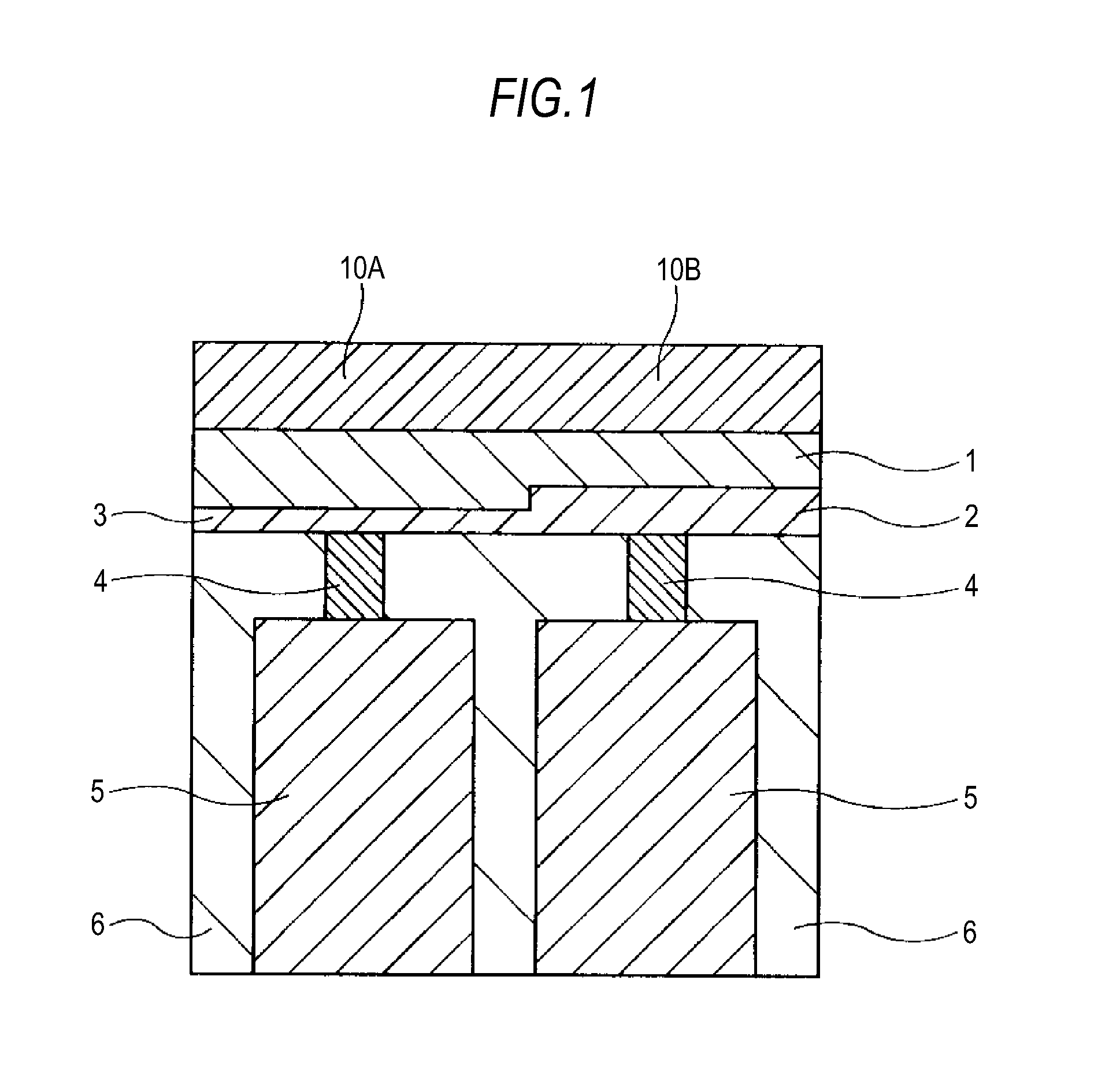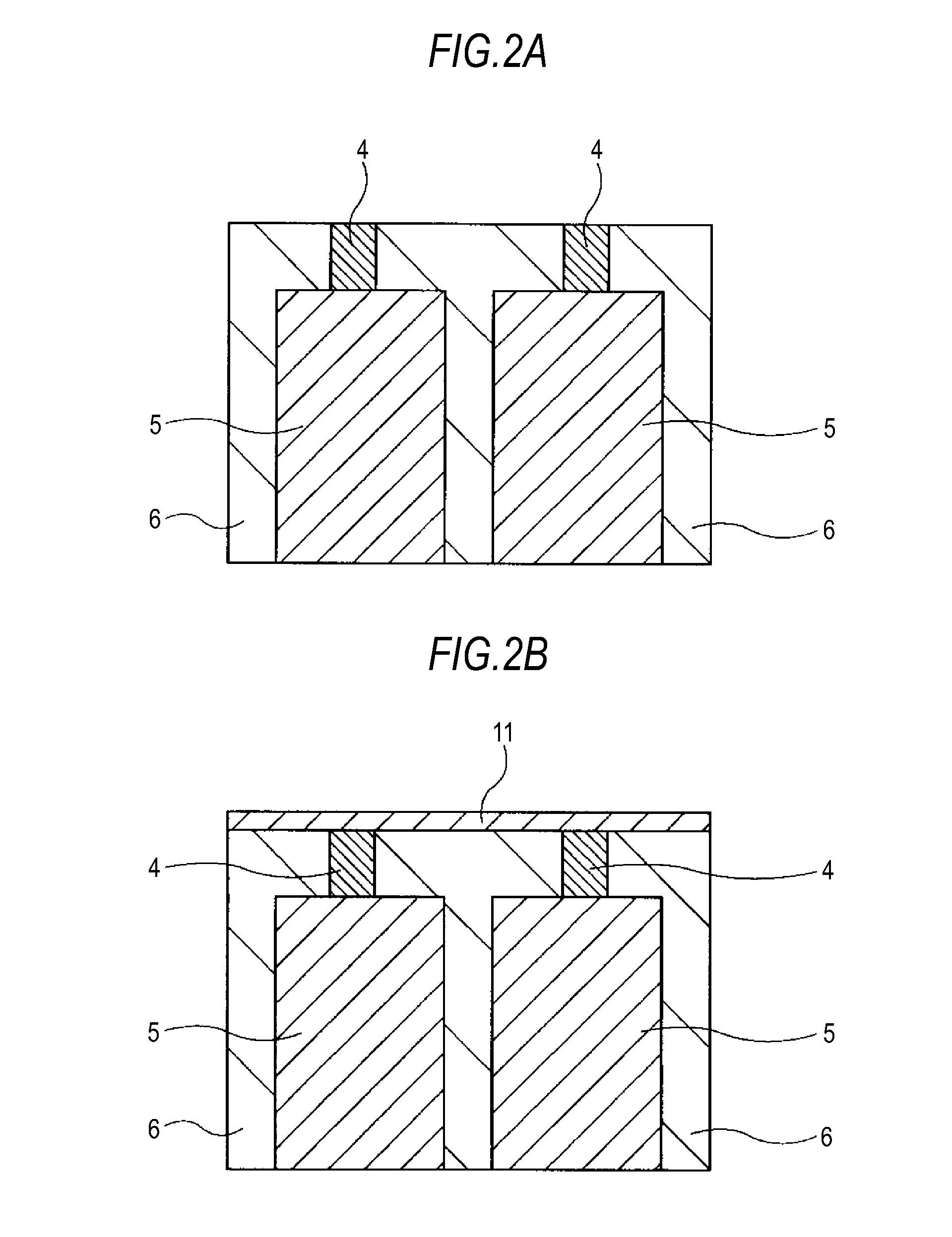Memory device and fabrication process thereof
a technology of memory devices and fabrication processes, applied in semiconductor devices, digital storage, instruments, etc., can solve problems such as difficulty in satisfying all characteristics, and achieve the effect of reducing system cost and power consumption, and more freedom in memory design
- Summary
- Abstract
- Description
- Claims
- Application Information
AI Technical Summary
Benefits of technology
Problems solved by technology
Method used
Image
Examples
first embodiment
2. First Embodiment
[0130]Specific embodiments of the invention will now be described below.
[0131]FIG. 1 shows an illustration of a schematic structure (cross sectional view of a relevant portion) of a memory device of First Embodiment of the invention.
[0132]The present embodiment is an application of the invention to a resistive-change memory element of the type in which, as described above, the resistive change operation is performed by the resistive-change layer and the resistive-change material supply layer (ion source layer).
[0133]The memory device is configured using resistive-change memory elements. The cross section illustrated in FIG. 1 shows an adjacent portion of two memory elements of different characteristics.
[0134]Each of these two memory elements is configured to include a resistive-change material supply layer 1, a resistive-change layer 2 or 3, a plug electrode (electrode layer) 4, and a lower electrode 5. The plug electrode (electrode layer) 4 and the lower electrod...
second embodiment
3. Second Embodiment
[0161]FIG. 5 shows an illustration of a schematic structure (cross sectional view of a relevant portion) of a memory device of Second Embodiment of the invention.
[0162]The cross section illustrated in FIG. 5 shows an adjacent portion of two memory elements of different characteristics.
[0163]The basic configuration of the two memory elements is the same as that described in First Embodiment.
[0164]In the memory device of the present embodiment, the thicknesses and the materials of the resistive-change layers 2 and 3 are different for the two memory elements illustrated in FIG. 5. Specifically, the memory device has the combination of the configurations described in (1) and (2) above.
[0165]In the left memory element (first memory element) of FIG. 5, only the first resistive-change material layer 11 forms the first resistive-change layer 3. In the right memory element (second memory element), the laminate of a second resistive-change material layer 13 and the first r...
third embodiment
4. Third Embodiment
[0174]FIG. 6 shows an illustration of a schematic structure (cross sectional view of a relevant portion) of a memory device of Third Embodiment of the invention.
[0175]The cross section illustrated in FIG. 6 shows an adjacent portion of two memory elements of different characteristics.
[0176]The basic configuration of the two memory elements is the same as that described in the foregoing embodiments.
[0177]In the memory device of the present embodiment, the resistive-change layers 2 and 3 have the same thickness but different materials for the two memory elements illustrated in FIG. 6. Specifically, the memory device has the configuration described in (2) above.
[0178]In the left memory element (first memory element) in FIG. 6, only the first resistive-change material layer 11 forms the first resistive-change layer 3. In the right memory element (second memory element), a third resistive-change material layer 14 forms the second resistive-change layer 2.
[0179]The mate...
PUM
 Login to View More
Login to View More Abstract
Description
Claims
Application Information
 Login to View More
Login to View More - R&D
- Intellectual Property
- Life Sciences
- Materials
- Tech Scout
- Unparalleled Data Quality
- Higher Quality Content
- 60% Fewer Hallucinations
Browse by: Latest US Patents, China's latest patents, Technical Efficacy Thesaurus, Application Domain, Technology Topic, Popular Technical Reports.
© 2025 PatSnap. All rights reserved.Legal|Privacy policy|Modern Slavery Act Transparency Statement|Sitemap|About US| Contact US: help@patsnap.com



